-
CapMetro slowing adoption of electric buses
Proterra bankruptcy really threw a wrench into it.
https://www.austinmonitor.com/stories/2024/07/cap-metro-stops-shift-to-all-electric-bus-fleet/
-
Long list of city props coming to ballot
So far there are thirteen planned propositions.
https://communityimpact.com/austin/south-central-austin/government/2024/07/22/austinites-likely-to-face-13-ballot-measures-on-government-election-rules-this-november/
https://www.austinmonitor.com/stories/2024/07/council-oks-13-proposed-charter-amendments-for-november-ballot/
-
Guide to voting in Austin
Good guide from KUT and Austin Common.
https://www.kut.org/austin/2024-07-15/austin-travis-county-voter-guide-voting-where-to-vote
-
Austin’s Ready To Rumble on ‘Crashy Cameron’ and ‘Deathtrap Dessau’ Roads – TOWERS
austin.towers.net Austin’s Ready To Rumble on ‘Crashy Cameron’ and ‘Deathtrap Dessau’ RoadsIf you drive regularly on Cameron Road between East 51st Street and Highway 290, or Dessau Road, which is what that same road’s called once you hit the north side of 290 all the way up to Par…
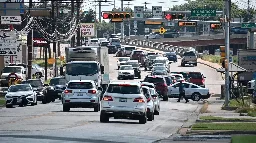
-
Austin Water proposing rate increase
https://www.austinmonitor.com/stories/2024/07/austin-water-tees-up-to-propose-rate-increases-to-council/
-
Weren’t people joking about bringing gondalas to Austin?
Looks like Dallas is actually considering it. Of course this is one of those mythical startups, so it will probably go nowhere.
https://www.msn.com/en-us/news/us/uber-like-elevated-cable-cars-could-be-dfw-s-next-attempt-at-tackling-traffic/ar-BB1p14tW
-
Ascension will stop offering health insurance plans in Texas
https://www.kut.org/health/2024-06-27/ascension-will-stop-offering-health-insurance-plans-in-texas
-
Sony buys Alamo Drafthouse
variety.com Sony Pictures Buys Alamo DrafthouseAlamo Drafthouse Cinemas has sold to Sony Pictures Entertainment but will continue to operate its theaters under the brand name
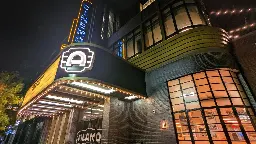
Wonder how much worse it can get?
-
Growing corn?
Any tips on growing corn in central Texas? Is it even practical? I sowed some corn in February, and they only grew 3ft. and looks like I might have a few very small corn cobs. The last time I tried to grow corn was in Ohio, and used the 3 sisters method, which worked pretty well. But idk wtf to do in central Texas.
-
Amplify Credit Union - problems with ACH transactions?
DAE have problems with ACH transactions at Amplify Credit Union?
Since I opened my account a few months ago I have had so many problems - Amplify being unable to send me their own security codes, third parties not recognizing the bank or its routing number, and inability to complete ACH transactions.
The most recent issue is that a third party recognizes the bank, but says "there was a problem processing" the transaction. Luckily I have an account at a different bank and was able to pay them.
What can I do to get this resolved? I see a lot of good reviews for the bank but haven't seen any reports of this issue, but surely it can't be just me? Did I make a mistake opening this account with them?
-
Reel mower sharpening?
Anyone know of a place around town that does reel mower sharpening? Austin Outdoor Power website says they no longer offer it. I have a kit but I don’t want to deal with doing it myself if I don’t have to. Thanks for any leads.
-
APD gets around ban on facial recognition by asking other cities to run it for them
www.yahoo.com These cities bar facial recognition tech. Police still found ways to access it.As cities and states push to restrict the use of facial recognition technologies, some police departments have quietly found a way to keep using the controversial tools: asking for help from other law enforcement agencies that still have access. Officers in Austin and San Francisco - two of the larg...
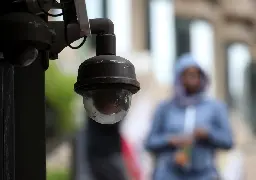
-
ACL fest brings almost a half billion dollars to Austin economy.
Also $8 mil in park improvements.
https://www.austinmonitor.com/stories/2024/05/acl-fest-shows-499m-economic-impact-with-8-1m-donated-to-parks-improvements/
-
so true
Bad things have happened to me and next to me and behind me because of niceholes wanting to control the traffic flow.
-
UT wants to throw $13.5 mil at I-35 caps
This whole project is such a waste of money.
When your tuition goes up even more, this will be one reason why. Fascinating how the rendering for these “UT caps” show mostly parking lots.
I still haven’t seen any info on how the exorbitant yearly maintenance costs for these caps are going to be funded.
https://www.austinmonitor.com/stories/2024/05/ut-pledges-13-5-million-to-cover-i-35-from-dean-keeton-to-15th-street/
-
With Austin office buildings 20 percent vacant, conversion to housing remains out of reach
www.austinmonitor.com With Austin office buildings 20 percent vacant, conversion to housing remains out of reach - Austin MonitorTwo years ago, with the office real estate market in Austin stuck at a 20 percent vacancy rate, Brad Stein took the first of two trips to other markets to see if some of the hundreds of thousands of empty…
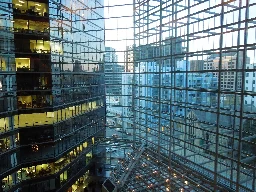
Two years ago, with the office real estate market in Austin stuck at a 20 percent vacancy rate, Brad Stein took the first of two trips to other markets to see if some of the hundreds of thousands of empty spaces in downtown Austin and areas beyond could be converted into badly needed housing stock. What Stein saw in a 2022 visit to Chicago and another trip to Dallas last year was that housing space and office space are two very different puzzle pieces that don’t fit together without considerable and expensive alterations.
“It’s easy to throw the idea out, to say, oh, we should just do office conversions to residential,” said Stein, president of Intracorp Texas, which has three residential developments in the works in Austin. “I was curious myself, and so I toured an office conversion to a multifamily rental project. … I wanted to see: Is this something that we could do in Austin?”
While those kinds of conversions are feasible and successful in other cities with older office buildings and less demand for new development, which keeps land prices lower than in Central Texas, the reality quickly set in that office-to-residential conversion isn’t likely to take place locally in any major way unless office vacancies rise to 50 percent or higher.
Stein and other real estate experts who spoke with the Austin Monitor said it would take a precise mix of factors to make those conversions make economic sense locally.
Among them:
Properties need to be 30 to 40 years old and already in need of significant renovations and improvements; Only buildings with floor plates of 15,000 square feet or less offer the ready access to windows and egress needed for residential use; Vacancies would need to be high enough to force owners to essentially give away a distressed asset at or below its land value.
Unless an owner is several years or even decades into owning a building that is only half full, Stein said it’s unlikely that the time and cost of a conversion would be in any way attractive. Since the surge in Austin office space has taken place in the last 10 to 20 years, owners would rather wait out a downturn instead of taking on substantial new costs or exiting a project at a loss.
“The offices and the areas where people want to live, I think they’re just kind of too new,” Stein said. “And I don’t think that the owners and the lenders of these office (real estate spaces) right now … are really willing to take a huge loss to kind of sell them and get out of them.”
By most industry measures, office space in the Austin area sits at about 20 percent vacant, though that number doesn’t take into account the amount that has been subleased by major tenants who had signed on for full occupancy of some new buildings and then changed course. Aquila Commercial listed the central business district vacancy rate at 22 percent in March, with the Domain having the lowest area vacancy rate at 11 percent.
The persistence of the vacancy rate has become a regular point of conversation with developers, real estate brokers, architects and planners, with conversion as a far-off “what if?” solution.
The biggest obstacle to putting beds in place of desks and work stations comes from the far different space needs for the two uses. Centrally located bathroom banks won’t work for residential properties that aren’t offered in a dormitory style, which means expensive new water lines are needed throughout the structure.
The same is true for heating and air conditioning systems, with individual units needed for every living space rather than centrally located plants that serve an entire building or portions of them.
Brandon Townsend, principal and project director for Page architects, said the costs of office-to-residential conversions are so high that cities and counties would have to offer substantial incentives or fee waivers to make the process attractive.
Townsend said another reason older office buildings are the most viable target for housing space is that older properties were likely constructed below their maximum allowed floor area ratio because the local economy at the time didn’t justify the expense, even in a desirable area downtown.
Now that housing demand downtown is high, he said the most likely move would be to knock an underutilized building down and build to its maximum height rather than converting to apartments or condominiums.
“If you had a building that was built in the early 1980s or late 1970s, when Austin was kind of going through one of its growth spurts, there probably wasn’t a need to build an 800,000-square-foot office building, even though they had the ability to do it,” he said. “The demand just wasn’t there because the city wasn’t that big, and so they built maybe a 30- or 40,000-square-foot office building. Is it better to take that building and take it down and build the full capacity that that site can bear, to 800,000 multifamily?”
In the world of office space developers, most are exercising patience over the current state of the market rather than taking drastic moves like conversion, which would be even more expensive than in recent years because or persistently high interest rates.
Tim Hendricks, senior vice president and managing director of Cousins Properties, said his company and others are taking a variety of smaller steps to slowly increase vacancy including investing in renovating buildings to suit smaller, non-tech occupants, and slowing or outright halting new development to allow new businesses in the Austin market to soak up available space. Hendricks said conversions aren’t an attractive option for companies like his, which play purely in office space and would have to sell a property outright to a company more able to handle residential uses.
There is some potential in areas outside hot business districts where owners may have fewer options to address low office occupancy.
“What we have seen is pressure on the older suburban assets that aren’t able to provide the amenities that customers are looking for today. The capital that’s required to modernize older buildings – they are struggling. I believe they will struggle for a while when it relates to conversions,” he said. “There’s been a few folks that worked on converting office to residential, vertical residential and high-rise residential, with some of that going on in New York City.”
Hannah Rangel, vice president of built environment for the Downtown Austin Alliance, said conversion has been a regularly popular topic in recent years as the city has had to address the need for housing as well as the effects of vacant office space on surrounding businesses. Like Stein and others, her research shows that the combination of high costs, logistics challenges and the expected slow rebound of the Austin market will make full conversions almost impossible downtown and in many other areas.
What’s more likely, she said, is incorporating a mix of smaller professional businesses into currently available space. And Rangel is a proponent of short-term conversions for creative, lifestyle and other businesses that could keep office space active for 10 years or so, with a return to office when the market is ready. Another area of interest Rangel and the DAA have identified is equitable transit-oriented development areas, where the proximity to transit and possible incentives could make office-to-residential conversions at least somewhat feasible.
“It’s a totally worthwhile conversation to happen for Austin broadly outside of downtown. Things get really interesting when you start to think about class B and class C properties and kind of low-rise office parks,” she said. “We’re already making commercial-to-residential conversion, so even though I think we want to be sort of forceful in the conversation and say this isn’t a fit for downtown, that shouldn’t stifle the conversation because I think that those two Lego pieces do go together – sort of – in other submarkets in Austin.”
- www.kut.org Charges dropped against all 57 pro-Palestinian demonstrators arrested on UT campus
The county attorney said there wasn't enough evidence to prosecute the people arrested during Wednesday's protest.

- austin.eater.com Cool Convenience Store Chain Foxtrot Closes All Austin Locations
The Chicago-based company filed for bankruptcy, thus shuttering its stores in Texas, Illinois, Washington, D.C., and Virginia

Official Statement:
>Dear Dom’s Kitchen & Market and Foxtrot Customers,
> It is with a heavy heart that we must inform you of a difficult decision we have had to make. After much consideration and evaluation, we regret to announce that Foxtrot and Dom’s Kitchen & Market will be closing their doors starting on April 23, 2024. The closure affects 2 Dom’s stores and 33 Foxtrots across Chicago, Austin, Dallas, DC areas. We explored many avenues to continue the business but found no viable option despite good faith and exhaustive efforts.
> This decision has not been made lightly, and we understand the impact it will have on you, our loyal customers, as well as our dedicated team members. We want to express our sincerest gratitude for your support and patronage throughout the years. It has been our highest honor to elevate the everyday and create a remarkable shopping experience for people who love food as much as we do. It has been a privilege serving you and being a part of your everyday lives.
> We understand that this news may come as a shock, and we apologize for any inconvenience it may cause. We genuinely appreciate your understanding during this challenging time.
> We would like to take this opportunity to thank each and every one of you for your loyalty and trust in Dom’s and Foxtrot. It has been an honor to serve you, and we will cherish the memories we have created together. We would also like to thank our team members who have committed themselves over the years to providing a unique selection of quality foods and creating an outstanding in-store customer experience. Lastly, we would like to thank our many partners, without whom we would not have been able to build such a strong brand.
> You can access FAQ’s below.
> Once again, thank you for your support, and we wish you all the best in the future.
> Important dates:
> April 23, 2024 – Delivery capabilities are no longer available.
> April 23, 2024 – Store operations are no longer available.
> April 23, 2024 – Store credits are no longer available.
> April 23, 2024 – All customer-facing operations are disabled.
> When will the Dom’s/Foxtrot stores close?
> Operations will end on April 23, 2024.
> When will the Dom’s Go/Foxtrot Apps close?
> Operations will end on April 23, 2024.
> Will consumers be able to use Foxtrot / Dom’s credits?
> All Dom’s/Foxtrot account credit and member perks will expire on April 23, 2024
— https://domschicago.com/?utm_source=Iterable&utm_medium=email&utm_campaign=campaign_9658007
-
Tesla skirts Austin's environmental rules at Texas gigafactory
https://electrek.co/2024/04/22/tesla-skirts-austins-environmental-rules-at-texas-gigafactory/
- www.austinmonitor.com Why is someone suing to get Travis County DA José Garza out of office – and what comes next? - Austin Monitor
A Travis County resident is trying to remove District Attorney José Garza from office. Betsy Dupuis filed a lawsuit Friday under House Bill 17, which allows anyone in a county to try to remove that county’s top prosecutor. Her complaint is similar…
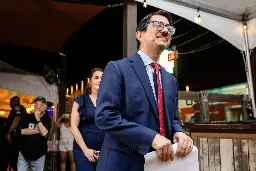
A Travis County resident is trying to remove District Attorney José Garza from office.
Betsy Dupuis filed a lawsuit Friday under House Bill 17, which allows anyone in a county to try to remove that county’s top prosecutor. Her complaint is similar to a previous one filed against the DA. Dupuis also told KXAN that Garza’s office mishandled a case after she accused someone of sexual assault.
HB 17, which took effect in September, has yet to be used in court.
Supporters of the law argue that some district attorneys in the state have gone “rogue” by, in their estimation, not enforcing laws, allowing folks to get out of jail more easily or dropping cases altogether.
Garza’s office isn’t prioritizing low-level offenses like marijuana possession, opting to dismiss some cases rather than locking up residents. Garza has also said he will not investigate cases involving abortion access.
In her petition, Dupuis cites Garza’s marijuana and abortion policies as reasons to remove him – as well as his prosecution of police officers accused of misconduct.
Opponents say the law undermines the will of voters, who elect district attorneys, and that it’s a way for the GOP-dominated Texas Legislature to meddle in Democratic counties, like Travis County.
Garza cruised to a primary victory this spring and faces Republican Daniel Betts in the November general election. The traditionally blue county typically elects Democrats.
At a news conference with congressional Democrats on Monday, an attorney representing two** **Texans being prosecuted for getting abortion-related care said HB 17 uses an enforcement mechanism similar to the state’s abortion ban.
“What HB 17 did was deputize every single person in Texas to go after every single prosecutor in Texas. It makes no sense,” Austin Kaplan said. “There are 254 counties. There are untold numbers of prosecutors … and all of them now are subject to attack from (anyone) across Texas for their decisions.”
There have been a couple of attempts to remove elected officials since HB 17 took effect. A petition in Hays County to remove District Attorney Kyle Higgins was dropped, and an earlier attempt to get Garza removed failed because the petitioner was being prosecuted by his office for drug possession. The law allows any county resident to file a petition to remove a prosecutor – as long as they’re not being prosecuted in that county.
A hearing in the latest attempt to remove Garza is scheduled for May 16. The case will be heard in a Comal County court, with a Republican judge presiding and a Republican prosecutor from Bell County.
That political divide underscores all of this. If a prosecutor is successfully removed, Gov. Greg Abbott would appoint someone to take over.
State Rep. Donna Howard, who voted against the bill, said that erodes the will of voters who elect prosecutors to do their jobs.
“We knew it could be misused to target DAs for political reasons under the guise of policy, disagreements rather than actual misconduct,” she said. “No DA prosecutes all crimes; all DAs use prosecutorial discretion to determine how best to serve those who elected them within their available resources.”
Howard and other Democrats said Monday the petition filed Friday is identical to the earlier one – pointing out that it even includes the same typos. They said the petition was initially submitted by Martin Harry, who ran against Garza for DA in 2020 and who has been shopping possible plaintiffs on social media. They also point out that the alleged misconduct** **Dupuis accuses him of took place before the law went into effect and is not enforceable in this instance.
Garza has said the case is politically motivated. In a statement published Monday, Dupuis said that’s not the case and that she wants accountability on the part of his office.
“While the petition focuses on Garza’s politically framed policies, upon legal advice, I saw signing it as the most viable way to initiate an investigation into the corruption of Garza’s office,” she said.
- www.austinmonitor.com Downtown Commission suggests tweaks to 'agent of change' noise requirements - Austin Monitor
The Downtown Commission wants the city to take a more proactive role in a proposed new measure that seeks to address friction over noise levels between new residential developments and existing music venues. Last week’s meeting included a presentation on…
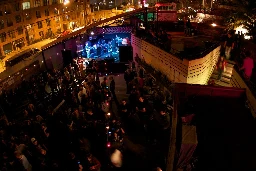
The Downtown Commission wants the city to take a more proactive role in a proposed new measure that seeks to address friction over noise levels between new residential developments and existing music venues.
Last week’s meeting included a presentation on a pending requirement that would force developers building within 600 feet of a music venue to conduct a sound assessment prior to construction to determine if they should add sound mitigation measures to their hotel, condominium or apartment project. The measure, which has been proposed by the Development Services Department, would also require any buyers or renters to be informed of the possible noise issues and that the sound assessment had been conducted so they could make a more informed decision prior to buying or renting a property.
Members of the commission said the city should require that the exact findings of the sound assessments be provided to prospective customers instead of merely informing them of the possibility of noise issues. The argument for that requirement was that a prospective resident needs as much information as possible provided easily, especially concerning a quality-of-life issue such as noise levels that could play a major part in their decision.
“I would strongly encourage that if I were representing a buyer that was looking at a unit in one of these buildings and I knew there was an assessment that was done for my client’s interests, I would want to see that assessment,” chair August Harris said. “Making it publicly available is the appropriate thing to do. Making it transparent avoids questions that you might have otherwise and it avoids somebody walking on a project that they might have an interest in instead of moving forward with a unit, because that is not disclosed.”
Commissioner Taylor Major, who is a developer, said the city should also establish a standard requirement of what professional or entity needs to sign the verification that a sound assessment has been conducted during the site plan review process. He said that in the past, other portions of the site plan process have seen him held to different standards on different projects because of DSD staff having different interpretations of the city’s regulations.
“A lot of the issues I run into sometimes with staff is when there’s ambiguity. It might be worth sort of fleshing out what is acceptable certification, because one staff member who’s reviewing it might say a signature from the architect is OK, and a different staff member might want to see something different,” he said. “They can create challenges for developers if the rule is not hard and fast about what is and what is not acceptable for the certification.”
Brian Block, the city’s nightlife and entertainment services manager, said the feedback from commissioners would be taken into consideration as DSD moves forward with the proposed measures that are scheduled to go before City Council next month. If approved, they would take effect in October and only cover new developments entering the site plan review process.
That approval would close nearly a decade of discussion and work to address tensions between entertainment businesses and development, especially in dense areas such as downtown. Block noted the sound mitigation requirements would not impose any changes in building standards for developers, nor would they affect established music venues that are already regulated by noise ordinances to operate at acceptable levels.
“The intent here is this would have as light a touch as possible on the development review process, that it wouldn’t include a staff review, that it wouldn’t lengthen the time or process related to the development review, and that it wouldn’t have an impact on housing affordability,” he said.
- www.austinmonitor.com New EV station will not charge forward in East Austin - Austin Monitor
Plans for an electric-vehicle charging lot spanning Pleasant Valley Road were thwarted by Planning Commission members who objected to its auto-centric nature at their last meeting. The project would have created two electric-vehicle charging parking lots flanking Pleasant Valley at…
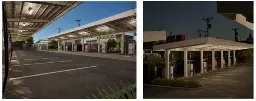
Plans for an electric-vehicle charging lot spanning Pleasant Valley Road were thwarted by Planning Commission members who objected to its auto-centric nature at their last meeting.
The project would have created two electric-vehicle charging parking lots flanking Pleasant Valley at Cesar Chavez Street. The easternmost lot is currently home to a vacant building and a former home to food trucks, and the western lot is undeveloped. Under the neighborhood plan, off-street parking lots are a conditional use that requires approval by the commission.
Commissioners voted 7-3-3 to deny the request. Commissioners Adam Haynes, Patrick Howard and Grayson Cox voted against the denial, and commissioners Nadia Barrera-Ramirez, Jennifer Mushtaler and Ryan Johnson abstained.
“I really do think as a city that it’s important we have adequate EV charging infrastructure, but I would be much more comfortable if these charging stations were some sort of conversion from an existing auto-oriented use, like a gas station, rather than, in this case, a mixed-use site on an Imagine Austin corridor,” Commissioner Alice Woods said. “I just really don’t feel like this decidedly auto-oriented use is appropriate in this area that we’ve identified for walkability and pedestrian-oriented uses in our comprehensive plan.”
Other commissioners backed up this sentiment. Commissioner Felicity Maxwell noted that, blocks to the south, the city was investing in a new pedestrian and bike bridge that will bring more multimodal options to the neighborhood. And, though he said it was a “hard decision to make,” Commissioner Awais Azhar concurred the use was not appropriate for the area, which was targeted for transit-oriented and mixed-use development in city plans.
Jewels Cain, with the law firm Armbrust & Brown, presented the case on behalf of her client, Voltera. The company operates similar operations across the country, though this would have been its first project in Austin.
She told the commission that the lots would “help with the city’s climate action initiatives and help bring that much-needed infrastructure for electric vehicle charging.”
City planning staff supported the conditional use permit as well, saying it complies with the requirements of the Land Development Code and neighborhood plan goals. Though the Holly Neighborhood Association did not take a position on the permit or speak at the meeting, several neighbors did object to it.
Michael Phalan, who lives near the proposed project, was one.
“The intersection, though currently not developed to its potential, is and should be an important gateway into and out of the Holly neighborhood. East Cesar Chavez is essentially a Main Street for the Holly neighborhood, and I, along with several of my closest neighbors, would like to see this project moved elsewhere.”
Phalan said he would find commercial off-street parking a more acceptable use than what is actually being proposed, which he deemed as “more like a commercial fleet motor pool” that would bring much more traffic to an already-busy intersection.
“One can certainly envision drivers servicing, vacuuming and washing their vehicles, or conducting some other business or downtime activities on-site while they charge their vehicles. I do not think this business is genuinely off-street parking, and it is not fair to make a decision that EV charging and parking are the same thing,” he said. “I do not believe they’re the same at all.”
Though the Planning Commission does make the final determination about whether conditional use permits are granted, its decision can be appealed to City Council.
- www.austinmonitor.com Travis County DA faces removal attempt under Texas law targeting 'rogue' prosecutors - Austin Monitor
A Travis County resident is seeking to remove progressive District Attorney José Garza from office using a 2023 Texas law aimed at limiting the discretion of locally elected prosecutors. A state district judge in Comal County on Friday appointed an attorney to…

A Travis County resident is seeking to remove progressive District Attorney José Garza from office using a 2023 Texas law aimed at limiting the discretion of locally elected prosecutors. A state district judge in Comal County on Friday appointed an attorney to represent Texas and pursue the case.
House Bill 17 took effect last September and allows courts to remove district attorneys for “official misconduct.” That could include refusing to prosecute certain criminal offenses under state law, such as low-level marijuana possession.
When Gov. Greg Abbott signed the bill, the Republican leader said the goal of the law was to “hold rogue district attorneys accountable.” The GOP priority legislation gained steam after progressive DAs, including Garza, said they would not prosecute people seeking abortions banned under Texas law.
However, elected district attorneys have significant prosecutorial discretion, meaning they get to decide which cases to pursue. As KUT previously reported, the law undermines this longtime convention.
Travis County resident Mary Dupuis filed a petition to remove Garza from office on April 8. The filing came just over a month after Garza won the March Democratic primary for district attorney in a landslide.
Dupuis’ petition argues Garza must be removed from office “due to incompetency and official misconduct.”
The petition alleges that misconduct includes “indiscriminately” pressing charges against law enforcement officials and presenting those cases to grand juries. The filing also argues Garza has refused to prosecute certain crimes, citing statements he has made on not pursuing abortion-related cases.
The petition concludes that “because (Garza’s) conduct makes him unqualified to serve as district attorney, he should be removed from office.”
This is not the first challenge Garza has faced under HB 17. Jason Salazar filed a petition to remove the DA from office last December. At the time, Garza’s office was prosecuting Salazar for a felony drug charge. The criminal charge Salazar was facing disqualified him from seeking to remove the DA under the law.
Dupuis’ petition is moving forward. In his order Friday, Judge Dib Waldrip, with the 433rd District Court in Comal County, stated Bell County Attorney Jim Nichols – who, like Waldrip, is a Republican – will litigate the case.
“The prosecuting attorney representing the state shall possess full authority under the law to proceed in the litigation as he and his office deem appropriate to bring this matter to a prompt and proper legal resolution,” Waldrip wrote in the order.
Waldrip also ordered Garza to appear in a Travis County district courtroom on May 16.
Garza responded to the petition in a statement emailed to KUT on Saturday afternoon, saying that his office works every day to “bring justice to Travis County and keep people safe.”
Garza also said in the statement that this attempt to remove him from office is politically motivated and he expects it to fail.
-
Self or Managed? - Property Tax Protest
Never protested my taxes before. Has anybody here done this in the past by your self? Or have you delegated to one of these companies that protests on your behalf?
Seems the catch is with these companies is that they charge a % of what you supposedly save. But also wondering if the process is “easy” enough that I can get my own appraisal, present that during hearing, and be done with it.
- www.kut.org Travis County DA faces removal attempt under Texas law targeting 'rogue' prosecutors
A Travis County resident filed a petition to remove District Attorney José Garza from office. The effort comes a little over a month after Garza's landslide victory in March's Democratic primary.
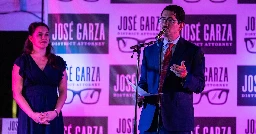
-
Reminder: Property Tax Election coming up
https://www.austinchronicle.com/news/2024-04-19/voting-info-for-the-travis-central-appraisal-district-election/
-
Police, Fire, EMS radio dispatches to be encrypted
https://www.statesman.com/story/news/2024/04/18/austin-police-fire-ems-scanners-radio-transmissions-in-austin-no-longer-public/73360881007/
-
Judge rules city can’t use taxpayer money for South Central TIRZ
www.austinmonitor.com Judge rules city can’t use taxpayer money for South Central TIRZ - Austin MonitorTravis County District Court Judge Jessica Mangrum has ruled that the city of Austin and the developers of the Statesman Planned Unit Development may not move forward with funding of the development on Lady Bird Lake with $354 million in…

Travis County District Court Judge Jessica Mangrum has ruled that the city of Austin and the developers of the Statesman Planned Unit Development may not move forward with funding of the development on Lady Bird Lake with $354 million in property taxes. The Save Our Springs Alliance, former state Sen. Gonzalo Barrientos, former Council Member Ora Houston and homeowner Faye Holland sued City Council for designating the area as blighted in order to create a tax increment reinvestment zone, or TIRZ.
Under state law, in order to create a TIRZ, the city must show that an area is blighted and that the property would not be developed without the use of public money. Under former Mayor Steve Adler, Council did just that, in spite of the fact that several outside attorneys told them it would be illegal.
Those attorneys included Bill Bunch of the Save Our Springs Alliance, Bill Aleshire and Fred Lewis.
Lewis told the Austin Monitor on Monday that the judge ruled that “they created a TIRZ illegally because they did not have evidence to support the statutory grounds to create the TIRZ and use public money on a private development.” He added, “The city was willing to give away $354 million at a minimum without any showing that the developer and the development needed the money. … Hopefully the City Council will learn from this and stop spending the public money on corporate welfare boondoggles.”
Aleshire said the decision is “a huge victory for taxpayers.” He noted that the decision could have statewide implications even though the ruling by a Travis County district judge does not apply in other jurisdictions. He said the TIRZ is being used illegally in other parts of the state, adding, “it’s about time the restrictions in the tax code were enforced.”
He added the law includes a requirement that an area would not develop without the assistance of property tax money. That was not the case with the waterfront property, which would clearly develop either way. “This decision protects property taxpayers from having to make up for” money the developer is not willing to spend, Aleshire said. He also noted that with a TIRZ, the city could issue bonds, which the city would then have to pay for.
When asked for a comment on the ruling, Meghan Riley, the city’s division chief of litigation, said, “We are disappointed in today’s ruling but very much appreciate the court’s careful consideration of this complex issue. We will review the specific implications of the decision in the coming days. That said, we do not believe this decision impacts the city’s ability to move forward with proposed zoning changes for the South Central Waterfront area.”
Two years ago, the Austin Monitor asked attorney Richard Suttle, who represents the property owners, what would happen if the TIRZ were eliminated. He said the developers understood that there was what he called “a gap” in funding for the project, thus the need for the tax money. He said his clients had underestimated the deficit and even though they were willing to absorb some of that cost, they expected the gap to be covered by the TIRZ.
“They underestimated the deficit and we are willing to absorb some of that underestimation,” Suttle said, but he added that if there was no TIF or TIRZ, the project would not work.
Kathie Tovo, who is currently running for mayor and was a City Council member when the TIRZ was approved, said Monday that she “supported the creation but not the funding of the TIRZ.”
“Our Council was assured by legal staff that a TIRZ was allowable, but I believed it was premature to move forward without a regulating plan that would require property owners to provide public benefits,” she said. “As the City moves forward after this decision, it should be a priority that this area of Austin redevelops in a manner that creates welcoming public spaces and housing for Austinites of different economic backgrounds. This is an opportunity for the City to redirect general fund dollars toward critical city services, like parks and income-restricted housing. The South Shore will develop without public subsidy.”
Mayor Kirk Watson and Council Member Zo Qadri were not on Council when the TIRZ was approved. However, they were named in the lawsuit as members of Council. José Velásquez, Ryan Alter were elected after the initial vote to create the TIRZ.
-
ACLU sues Travis County for failing to provide legal counsel
www.austinmonitor.com ACLU sues Travis County for failing to provide legal counsel - Austin MonitorThe American Civil Liberties Union has filed a class action lawsuit against Travis County for its failure to provide arrestees access to a court-appointed lawyer preceding their first hearing before a judge, known as counsel at first appearance, or CAFA. …
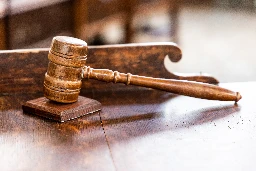
The American Civil Liberties Union has filed a class action lawsuit against Travis County for its failure to provide arrestees access to a court-appointed lawyer preceding their first hearing before a judge, known as counsel at first appearance, or CAFA.
CAFA is intended to assist jailed individuals who cannot afford a private lawyer for work before the magistration hearing, which is where a judge decides the appropriateness of arrest in the first place and sets bail.
Receiving CAFA upon arrest, the ACLU contends, is not simply reflective of positive outcomes or to be thought of as a social service: It is a constitutional right.
In Travis County, magistration sessions are currently conducted by videoconference in the basement of the jail, in a configuration that many have voiced is highly uncomfortable. As with the whole of the jail, CAFA attorneys are not permitted inside the room.
Multiple organizations have studied these hearings, finding that individuals – up to 29 percent, as found in one study – brought before a judge prior to meeting with an attorney are often pressured aggressively by a judge to bring forth self-incriminating information. This can damage their own case and allow for a host of consequences as their case moves to trial.
People are often burdened with extraordinary bail amounts at these hearings – another distinguishing feature of the county’s criminal justice system – and many people are behind bars for days before their magistration appointment with cases that would have been waved away pre-trial with the help of an attorney.
In past sessions of the Travis County Commissioners Court, especially relating to the plans for the new Diversion Center, commissioners have emphasized the potentially injurious effects of “even one day in jail,” citing its potential to disrupt medical treatment, income, employment, housing and custody of their children. Its failure to provide CAFA – potentially relegating this same class of individuals to weeks of confinement and congruent damages – has attracted years worth of criticism.
In 2022, the county created a pilot program for CAFA implementation in concert with Texas A&M University and the Capital Area Private Defender Service, supported by a $500,000 grant. Travis County Sheriff Sally Hernandez, frustrated by staffing issues, essentially rescinded her support for the program shortly after its implementation, offering to dedicate the pilot two eight-hour shifts per month. The program collapsed after nine days.
Now, officials are poised to implement a similar effort, raised from the grave – without the resources of a university and a $500,000 cash infusion. In a proposed plan, county officials will facilitate two eight-hour CAFA shifts providing legal services in partnership with the Capital Area Private Defender Service. The committee plans to offer legal services in a large auxiliary courtroom at the Blackwell-Thurman Criminal Justice Center, with adequate videoconferencing infrastructure still on hand.
- www.austinmonitor.com Advocates for ending homelessness say rental assistance program doesn't go far enough - Austin Monitor
Tony Carter lives in a two-bedroom apartment in South Austin. He was placed there in February through a rapid rehousing program. Rapid rehousing programs in Austin provide up to 24 months of rental assistance and support services to people experiencing…
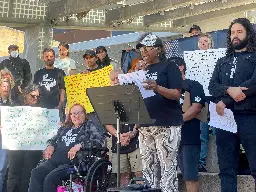
Tony Carter lives in a two-bedroom apartment in South Austin. He was placed there in February through a rapid rehousing program.
Rapid rehousing programs in Austin provide up to 24 months of rental assistance and support services to people experiencing homelessness. But for some residents, it doesn’t close the affordability gap.
Carter said he receives assistance with his $1,700 monthly rent through the program, but his share of the rent is about to go up.
“I work two jobs, but I don’t make enough on both of them to even meet my monthly rent if I was to decide to stay in those apartments they’ve got me in,” Carter said.
The rapid rehousing program aims to help people transition into permanent, stable housing.
How it works is the program provides a certain amount of assistance with rent over time, with the renters’ share increasing slightly every few months. The idea is that at the end of the program, people who are enrolled will be able to afford their rent and take over the lease.
But many people who benefit from the program said that doesn’t always happen. Carter said he and his pregnant fiancé might end up back on the street if they can’t afford the $1,700 rent by the end of February 2025.
According to the Ending Community Homelessness Coalition, the program is working for about 60 percent of people enrolled in it. But Carter and several of his colleagues from the local advocacy group Vocal Texas said the help does not go far enough.
On Friday, Vocal Texas launched a campaign calling on the city to improve the system so more people benefit.
“While this program works for many people, we want this program to work for everyone who gets it,” said JJ Ramirez, an organizer with Vocal Texas. “There needs to be easier transitions into permanent housing. We need to stop these arbitrary time limits and we know the city can do this right now.”
A lot of them work multiple jobs – often at minimum wage – or are on fixed incomes due to disabilities and other factors. Others have found it hard to find a job because they have a criminal conviction that comes up in background checks.
Maria Cepeda said her rapid rehousing assistance ends in four months. When it runs out, she is not sure what she will do. She is not working right now after recovering from major knee surgery, and she is grappling with the loss of her mother. Cepeda said more months of assistance would go a long way.
“People have so much going on in their lives and people need time,” she said. “Every night, I think about what’s going to happen when my rapid rehousing runs out in August. … If it ends, I’ll end up back on the street. I appreciate what the city is doing for me, but I wish this rapid rehousing was for longer.”
Luz Moreno-Lozano/KUT News. Laura Ann Martinez said she was kicked out of the rapid rehousing program when she could not pay her portion of the rent.
Others said they wished they had more affordable options and had homes in good condition.
Matt Mollica, executive director for ECHO, acknowledged that the system isn’t perfect and faces challenges.
“Our vacancies in Austin are at all-time lows,” Mollica said. “Our housing costs, even though we’ve seen some relief over the last couple of months, are at all-time highs in terms of rent costs.”
That is also compounded by limited affordable and low-income housing options and high tenant criteria – like good credit, rental history and clean background checks – that many landlords require. Many landlords also refuse to accept housing vouchers or rental subsidies, Mollica said.
“In spite of that, the providers in the community that provide rapid rehousing have really done a great job of finding places for people,” Mollica said. “The providers are doing a really good job in a really difficult market.”
Vocal Texas advocates said Austin must find ways to keep people in their homes, including building and creating more affordable housing programs that offer support services and permanent solutions for people in need.
“As a community, we need to shore up these pitfalls and make sure that everyone is housed successfully,” Ramirez said. “Stop the clock. No one exiting a rapid rehousing program should be homeless again.”
As Austin prepares its budget for next year, Ramirez and others from Vocal Texas said they will urge council members to make better investments in these programs that support real people.
Austin and Travis County have been working for years to build and open more affordable housing and permanent supportive housing that gives people access to services like skills training and health care.
Around 1,000 units of permanent supportive housing are expected to be available by the end of 2025.
Late last year, the city created an independent office to lead the homelessness response. It previously functioned under Austin Public Health. The city also recently launched a text message alert system to connect with people who are unhoused.
- www.austinmonitor.com Save Our Springs Alliance sues City Council over Open Meetings Act - Austin Monitor
As he threatened to do at last week’s City Council meeting, Save Our Springs Alliance Executive Director Bill Bunch has sued the city, the mayor and Council for alleged violations of the Texas Open Meetings Act, the Austin City Charter…
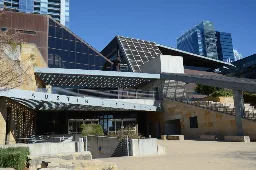
As he threatened to do at last week’s City Council meeting, Save Our Springs Alliance Executive Director Bill Bunch has sued the city, the mayor and Council for alleged violations of the Texas Open Meetings Act, the Austin City Charter and Council’s own procedures for allowing the public to speak. The suit was filed in Travis County District Court.
Bunch and SOS, which is dedicated to protecting Barton Springs and the Edwards Aquifer, sued the various defendants April 5 over alleged Open Meetings Act violations and amended the suit on Thursday to include allegations about the city’s regulations and the City Charter. He told the Austin Monitor on Thursday he is “trying to get an emergency hearing before next week’s meeting.” At such a hearing, Bunch would seek a temporary restraining order and a permanent injunction “to remedy defendants’ violations of law as to the April 4, 2024 consent agenda and to prohibit additional and future violations of the Texas Open Meetings Act and the Austin City Charter.”
At last week’s meeting, Bunch signed up to speak on four consent agenda items. When he started to speak, Bunch asked Mayor Kirk Watson whether he would have two minutes to speak on each of the items. In making the request, Bunch referred to the requirements of the Texas Open Meetings Act. Watson refused his request and deducted the time Bunch had used in protesting the mayor’s interpretation of the rules. Bunch then had one minute and one second to address the four items he intended to speak on.
At the time, Bunch made clear that he intended to sue over Council’s interpretation of the Open Meetings Act. In the past, Council has allowed each speaker three minutes to speak on each item. He noted in a conversation with the Monitor that under the current rules, there would have been no all-night meeting in 1990on the Barton Creek PUD, Jim Bob Moffett’s failed attempt to develop and despoil Barton Springs. That meeting essentially launched the Save Our Springs movement.
Bunch’s lawsuit requests that the court grant injunctions prohibiting Council from restricting public speakers’ time, “regardless of the number of posted items that a speaker has registered to address and/or based on a practice that is not contained in a duly adopted ordinance of the City Council. For temporary relief, prior to Council acting by ordinance to correct its ongoing violations of the City Charter, the plaintiffs are requesting the court to order the Council to allow public speakers a minimum of three minutes to speak on each item for which the speaker has properly registered to speak to the Council.”
Plaintiffs contend that the defendants have been in violation of the City Charter since 2017.
A city spokesperson told the Monitor: “We believe the council is following the Texas Open Meetings Act by allowing the public to speak on all matters before the council acts. In addition to speaking at a council meeting, (either in person or by telephone), there are multiple ways for members of the public to make their opinion known to council: conversations with individual council members in person or by phone calls, and individual or group emails, letters.”
The lawsuit also requests that the court void all actions taken at the April 4 meeting that were on the consent agenda or the addendum to that agenda. “In the alternative plaintiffs request that the Council’s actions to approve Consent Agenda items 6, 23 and 43 be voided.” Item 6 was a $3 million contract with HDR Engineering Inc. for a study to determine where the water utility might locate an additional new pump station and reservoir. Bunch spoke against the item.
He opposed item 23, described as a contract for a land stewardship program with American YouthWorks for up to five years for a total contract amount not to exceed $13,482,000. He also opposed item 43, which set a public hearing to consider an ordinance amending the Land Development Code to “create a new zoning district for a density bonus … and establish boundaries for the new zoning district located in the vicinity commonly known as the South Central Waterfront.”
2024.04.11. COA TOMA. First Amended Petition with Attachments FINAL (Hosted by DocumentCloud)
-
Warrant: Woman accused of drugging, robbing men in downtown Austin, steals thousands
>The man said while waiting for his rideshare to arrive, he was flagged down by the suspect. Mistakenly thinking it was his rideshare, he got into the front seat without verifying the vehicle or driver information.
>According to the affidavit, the suspect offered the man a drink from an open container, which he accepted. The man said shortly after taking a drink, he blacked out and had no memory of what occurred for several hours.
Yeah please don't do this
- www.austinmonitor.com Austin Mayor Kirk Watson declares his plans to run for reelection - Austin Monitor
To the surprise of practically no one in Austin, Mayor Kirk Watson announced on Wednesday that he will run for reelection this November. In an email to supporters, he outlined victories so far in his current two-year term. “For example,…
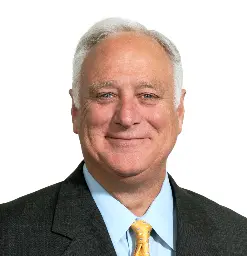
To the surprise of practically no one in Austin, Mayor Kirk Watson announced on Wednesday that he will run for reelection this November. In an email to supporters, he outlined victories so far in his current two-year term.
“For example, we’ve adopted the most ambitious housing reforms in decades to create more affordability; we’ve made big new investments and brought a new approach to helping people experiencing homelessness; and we’ve taken meaningful steps to begin restoring police staffing and improve emergency response. We’ve also moved forward on job training, child care, and transportation,” Watson wrote.
In November, Watson will face former City Council Member Kathie Tovo, community organizer and activist Carmen Llanes Pulidoand the former executive director and lead organizer of Central Texas Interfaith, Doug Greco, for a four-year term. In 2021, voters decided to move the mayoral election so that it falls in presidential election years, ensuring more participants.
Eight of the 10 Council members who served with him have endorsed Watson, along with County Judge Andy Brown and three of the four Travis County commissioners, as well as local legislators and other well-known Austinites. Council Member Mackenzie Kelly, the only Republican on Council, is running for reelection. So regardless of how she might feel about Watson personally, it would be unwise for her to endorse him. Council Member Alison Alter stands out as the one member of Council to express her personal disdain for Watson, telling the Austin American-Statesman that he is a “bully.”
Watson served as Austin’s mayor from 1997-2001. He was elected to represent Travis and surrounding counties as a member of the Texas Senate from 2007 to April 2020, when he stepped down from his Senate seat to become the first dean of the University of Houston’s Hobby School of Public Affairs.
Watson was elected as mayor once again in 2022, defeating Democratic state Rep. Celia Israel by just 886 votes out of more than 114,000.
Watson has an experienced political team to help with his campaign, including Joe Cascino as his campaign manager, David Butts as an adviser and Mark Nathan to handle advertising. Watson hired Cascino last year to work in his office handling constituent services, following Cascino’s involvement in Watson’s 2022 campaign. Cascino recently left that post to lead the campaign. Cascino told the Austin Monitor on Wednesday that he does not expect to have a campaign kickoff party until late summer or early fall.
Meanwhile, Tovo and Llanes Pulido are making the rounds of political clubs, introducing themselves and talking about their plans. Tovo and Llanes Pulido both visited with members of the South Austin Democrats at their meeting Tuesday night. Tovo noted that the South Austin Democrats was the first political club that she joined years ago when she first ran for Council. She reminded the group of her past work, including a long effort to make the Sobering Center a reality and her support of environmental causes, such as Water Forward, the city’s long-term plan for better water use. She pointed out that the group had endorsed her in the past and expressed the hope that they would do so again.
Llanes Pulido said that although she does not live in South Austin, she has spent the last 12 years organizing south of Ben White Boulevard. “I grew up here in Austin, and I have friends and family south of the river,” she told the group. Llanes Pulido said she had been asked to run for mayor by a broad array of people and groups. She said she thought she should run because “I think we are at a critical turning point,” citing an affordability crisis in the community and the availability of money, including federal funds, to address climate change and affordability.
Greco is also working to get out the word that he is running. He recently put out a press release saying the city should take over the job of supporting University of Texas students who were depending on the diversity and equity programs that recently have been eliminated.
In a press release, Greco said, “Where the state has failed LGBTQ students at UT, the City of Austin needs to lead.” He noted that he is running to be Austin’s first openly gay mayor.
“University LGBTQ centers provide life-saving services and gathering spaces for LGBTQ students,” he wrote. “This closure is unacceptable. As mayor, I would call together leaders in the LGBTQ community as well as university officials, students, and local legislators to determine what the city and community can do to help replace these supports.”
- www.austinmonitor.com PARD updates plans for new Dougherty and for cultural center expansions - Austin Monitor
The city is moving forward with plans to replace the Dougherty Arts Center with a new multiphased facility located in the Butler Shores Park area. The Parks and Recreation Department plans to begin the permitting process for the new arts…
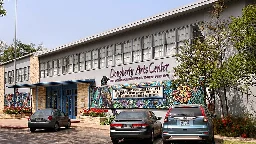
The city is moving forward with plans to replace the Dougherty Arts Center with a new multiphased facility located in the Butler Shores Park area. The Parks and Recreation Department plans to begin the permitting process for the new arts center soon, while also conducting community engagement sessions and getting support from relevant boards and commissions, according to a recent memofrom PARD Director Kim McNeeley.
The memo also spells out the latest status of the construction plans for three other cultural centers: the Emma S. Barrientos Mexican American Cultural Center, the George Washington Carver Museum and Cultural Center and the Asian American Resource Center. Construction and expansion projects planned or underway for all four centers will be funded by money from recent city bond proposals.
City Council had in recent years directed staff to move forward with a new Dougherty to replace the deteriorating building on Barton Springs Road. The new center would total 45,000 square feet, featuring underground parking and sharing as much infrastructure as possible with nearby facilities such as the ZACH Theatre. Inflationary pressures and specifically the parking structure caused the projected cost of the project to grow to $61 million, far more than the roughly $28 million available in bond funding.
At a recent Council work session, McNeeley detailed the cost constraints for the new Dougherty and received tacit support for moving ahead with a new arts center with no underground parking that would be smaller and designed to accommodate future expansion.
The memo also noted that the second expansion phase of the MACC is proceeding according to plan, with construction scheduled to conclude by next summer. The expansion was designed to add roughly 68,500 square feet to the 36,000-square-foot facility, adding more classroom space and reconfiguring the center’s central zócalo gathering space to allow for better management of large crowds for music performances and other events.
The Carver center, which is currently undergoing renovation of the Boyd Vance Theatre, is preparing a request for quotes for conceptual design services and initial cost estimates for a future expansion that likely would be paid for with a future bond package. The theater renovation and other improvements currently underway are expected to conclude this spring.
At the Asian American Resource Center, work on a phase two expansion will continue this spring with conceptual design and possible programming itinerary for a new pavilion planned for the facility.
The memo also notes that the Austin Economic Development Corporation is still working to complete deals for creative spaces with the $5.1 million remaining from the 2018 bond package that brought in $12 million for creative space preservation. Those deals are expected to be completed in the next six months, with Anne Gatling Haynes, AEDC’s chief transaction officer, telling the Austin Monitor two or three deals are still possible using that money.
Gatling Haynes said the AEDC is working on additional deals using money from the city’s iconic venue funds, which were initially approved in the wave of Covid-19 relief programs.
Looking toward a future bond package expected to go before voters in 2026, McNeeley’s memo notes that AEDC’s initial list of possible projects totaling $300 million has been cut to a short list of preferred creative space projects totaling $75 million.
The short list total had initially stood at around $60 million, but Gatling Haynes said the new number reflects the reality of the current Austin real estate market.
“The pipeline of our projects hasn’t changed, and it’s the same pipeline. It was just an updated number (in the memo),” she said. “This is basically just taking a look at the things in our pipeline and what we could easily find. We could easily put projects on a future bond issue.”
- www.austinmonitor.com Travis County officials credit moderate eclipse traffic to planning and clouds - Austin Monitor
Monday’s total solar eclipse did not bring the massive crowds and traffic that some thought the Austin area might see. The cloudy weather might have been the reason, but it also could have been the monthslong preparation for the event.…
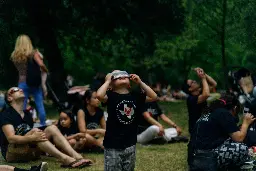
Monday’s total solar eclipse did not bring the massive crowds and traffic that some thought the Austin area might see.
The cloudy weather might have been the reason, but it also could have been the monthslong preparation for the event. Several school districts canceled classes. Some businesses closed. And advice to stay home, or at least stay close to home, to experience the eclipse was heard.
For months, local officials warned residents to be prepared for an influx of people that could lead to road congestion and gridlock, overcrowded parks and strains on gas stations and grocery stores. It was estimated that Travis County’s population could double.
But no one knew exactly what was going to happen. The goal was to be prepared for anything.
Eric Carter, chief emergency management coordinator for Travis County, said that crowds and traffic were moderate.
“So that is the good news,” Carter said. “And as I’ve shared with my partners, if we had not prepared, what we did experience would have been a challenge.”
The city and county activated the emergency operations center on Sunday. More than 20 agencies across the region worked together to coordinate and put resources in place.
Lots of communication also went out on social media and was shared with several outlets warning of the event.
Hector Nieto, a spokesperson with Travis County said, “Monday was a good day.”
“We did everything we could leading up to that day, and if we did everything correctly, it would be a light day, and fortunately it was,” Nieto said.
In November, City Council passed a resolutionthat called for the creation of a plan for the eclipse that included all relevant city departments, including Parks and Recreation, the city’s tourism bureau and the Austin Independent School District.
In March, Travis County declared a local disaster, which would give first responders better control and coordination of traffic and other needs during the eclipse. The county also required reservations for day passes to several county parks and registration for events with 50 people or more.
Just last week, officials made last-minute pleas for people to be prepared, especially with the many events happening before Monday.
In addition to the eclipse, Austin hosted the Statesman Capitol 10K, the CMT Music Awards and a regularly scheduled soccer game at the Q2 stadium. All of these were expected to put further strain on roads and resources.
Austin wasn’t the only area not to see that large influx of people. Hays County and the Hill Country also reported seeing a lot of people, but not quite the overwhelming amount that was anticipated, Carter said.
County officials said they are still gathering data on traffic, crowd numbers and money generated from the eclipse. They also plan to gather feedback from people in attendance.
Still, there were a lot of people, and the traffic flow was good because of the regional coordination, Carter said.
Monday’s response was a regionwide effort, with plans that Carter said made it easy to communicate and coordinate.
“We are proud of the work that was done by everyone to step forward aggressively, look proactively at what was needed, put those resources into place, and then come together on game day,” Carter said. “Overall, everything flowed well.”
- www.austinchronicle.com Kirk Watson Wants Four More Years
Mayor makes it official, announces 2024 re-election campaign
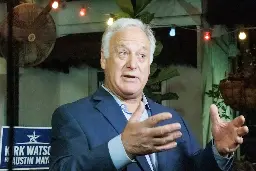
The once-again mayor is looking to earn another term. Kirk Watson formally announced today, April 10, his 2024 re-election bid.
If re-elected Watson will serve a full four-year term, meaning his reign at City Hall would have a January 2029 scheduled end date. In his campaign announcement, Watson trumpeted key accomplishments of his first, two-year term, such as passing ambitious housing reform and helping to initiate a “reset” of City Hall bureaucracy. “Working closely with this City Council and City Manager,” Watson wrote in a news release, “I’m proud to have helped us restore efficient, effective basic services while also helping put us on a new path to tackle some of Austin’s biggest long-term challenges.”
Whether or not Watson has indeed worked closely with Council, it is inarguable that the mayor has worked veryclosely with outgoing Interim City Manager (and longtime ally) Jesús Garza. The closeness of the latter relationship was a big part of what allowed Watson to forge ahead with controversial decisions without the input or support from his Council colleagues. Initiating a partnership with the Texas Department of Public Safety to patrol mostly Black and brown neighborhoods in East Austin, attempting to hire disgraced former Austin Police Chief Art Acevedo, and even restarting negotiations with the Austin Police Association for a long-term labor contract under conditions set by the APA were all significant Garza decisions which Watson either endorsed or did not publicly oppose.
Watson’s ability to get things done at City Hall cannot be denied. Early into his tenure he helped initiate changes to the city’s permitting review process that are already showing results; he helped pass the kind of Land Development Code change that prior Councils could only dream of; and he helped stave off budget cuts at Integral Care, the largest provider of mental health care in Travis County and a key partner in addressing homelessness throughout the city.
Given Watson’s two-year track record as mayor with his reputation as a vindictive leader, it’s no surprise that he has already secured the endorsement of eight-of-10 Council members. These colleagues “want a partner in the mayor’s office who is open-minded, forward-thinking,” Watson said in the news release, which is likely true – they may also see no benefit in not endorsing an incumbent mayor whose challengers, as of today, are longshots. Former CM Kathie Tovo, land-use activist Carmen Llanes Pulido, and Central Texas Interfaith organizer and pastor Doug Greco have all announced mayoral campaigns, though none of them have launched aggressive ad campaigns or made frequent public appearances since announcing.
CM Alison Alter, who endorsed Watson in 2022, is one of the two CMs (Mackenzie Kelly being the other) not endorsing Watson today. “I have learned when someone shows who they are, believe them,” Alter, who is not seeking re-election this year, told the Chronicle. “Watson has acted as a bully and prevented real policy deliberation by members of the Council and of the public.”
The mayoral and Council elections are set for Nov. 5
- www.austinmonitor.com Democrats vs. Republicans: First election coming for Travis Central Appraisal District board - Austin Monitor
Even though their party affiliations will not be on the ballot, three Democrats, three Republicans and a Libertarian are running for three seats on the Travis Central Appraisal District Board of Directors. That election on May 4 will be the…
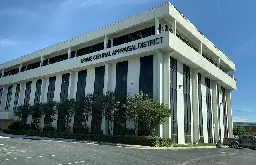
Even though their party affiliations will not be on the ballot, three Democrats, three Republicans and a Libertarian are running for three seats on the Travis Central Appraisal District Board of Directors. That election on May 4 will be the first such election since passage of a law requiring that three of those directors be elected.
The three who are elected next month will join five appointed members. A new state law dictates that at least two of the three elected members of the TCAD Board of Directors agree on all Appraisal Review Board (ARB) appointments. Travis County Democrats are concerned that this low-key election could result in the election of Republicans who will try to influence decisions that could end up hurting school districts in particular by appointing people who want to lower property values.
The Travis County Democratic Party has endorsed the three Democrats in the race: Jett Hanna, Shenghao “Daniel” Wang and Dick Lavine – in Places 1, 2 and 3, respectively.
Two well-known Republicans – Travis County Republican Party Chair Matt Mackowiak and former Austin City Council Member Don Zimmerman – and a lesser-known candidate, Bill May, are also vying for the three seats. In addition, software engineer Jonathan Craig Patschke, who is listed online as the treasurer of the Travis County Libertarian Party, is running against Wang and Mackowiak for Place 2.
As Democrats explain, if an appraisal review board undervalues properties, local school districts will get less funding. The Texas comptroller is required to study property values every two years and determine whether the appraised values are correct. If properties are undervalued, the district can be forced to pay more of its base budget and get less funding from the state. For example, for Conroe ISD, among others, that determination could result in a loss of millions of dollars in state funds.
The Austin Monitor asked each of the candidates for a statement about their candidacy and got responses from Hanna, Wang, Lavine, May and Zimmerman.
PLACE 1: HANNA VS. ZIMMERMAN
Attorney Jett Hanna served on the TCAD Board of Directors as an appointed member back in the 1980s. In a previous job, he notes he was board certified in commercial real estate law. He is currently serving on the Texas Supreme Court Professional Ethics Committee. Hanna said, “I have no real estate interests except my house, and I have a child who rents an apartment here in Austin.”
Hanna is among those concerned about the impact elected members could have on the appraisal board. He told the* Monitor* via email, “A majority of the 3 elected members must agree to each ARB member. Essentially, 2 elected members can either stall ARB appointments or force appointment of ARB members who aren’t acceptable to the rest of the board.
“Giving the elected members this power creates some direct accountability to voters for the ARB appointments, but also creates a potential to introduce politics into what should be a technical process. The elected members should not try to introduce a tax cutting agenda, a public school defending agenda or a wealth redistribution agenda to the appraisal process. The places for having those arguments are in the legislature, which sets the tax structure and in the local governments, which set the tax rates.”
Don Zimmerman directed the Monitor to the League of Women Voters for a statement on his candidacy, but it couldn’t be located. When asked for it directly, Zimmerman told the Monitor via text message: “Not sure I’m going to bother – it’s a county wide election and for 22 years I’ve seen Travis county vote for unlimited government and taxation with precious few exceptions (voting down Sarah Eckhart’s downtown courthouse boondoggle in 2015 was one rare instance, but I had the visibility on D6 council seat which helped). I stand for the opposite and many voters already know that. The partisan Democrat organizations are already beating the drums that ‘anti-government Republican extremists’ are on the ballot to defend taxpayers – have you seen their emails?”
“The religion of the Progressives is evident everywhere. The incredibly famous prophecy of Isaiah 9:7, speaking of Christ the Messiah, says ‘of the increase of His government and peace there shall be no end’. Progressives see almighty government as Messiah, so they to see no end to the increase of almighty government power, which comes from confiscatory taxation and unlimited, arbitrary legislation freed from the shackles of ‘God given rights and liberties’. But that tyrannical government is from hell, so the absence of peace – and escalation of conflict – never ends.” Zimmerman added later: “Everything is partisan for the extremist partisan Democrats, whose god is almighty government, and whose altar is political power.”
PLACE 2: WANG, MACKOWIAK AND PATSCHKE
The very first thing you will see when you go to Daniel Wang’s website is the statement, “Daniel is a proud Democrat running against the Republican Party Chair of Travis County.” However, right after that he provides a lengthy statement about the need for property appraisal to “be kept separate from the political considerations that school boards, city councils and county commissioners weigh in setting the tax rate applied to property values.”
His website further explains that the job of the appraisal district “is to set fair and accurate property values throughout Travis County, as required by the Texas Constitution.” As Wang explains, the appraisal district does not set property taxes but provides taxing authorities – including cities, counties and school districts – with information about the value of each property.
“Property owners can protest the appraisal set by TCAD through appeals to the Appraisal Review Board (ARB) – citizens appointed by the Board of Directors to impartially weigh evidence brought by the taxpayer disputing their valuation. In choosing members of the ARB, directors should look for fair-minded people who can listen to both sides and accurately apply the rules governing valuation. Appraisals are controlled by professional standards, state law and oversight by the state comptroller. The ARB has no role in setting tax rates.”
He told The Austin Chronicle, “The GOP wants to defund local government. Screwing up the appraisal process is one way they could achieve that goal.”
Although Matt Mackowiak did not respond to the Monitor’s request for comments, he told The Austin Bulldog, “I’m not anti-government, but people in Austin are really concerned about the massive and unsustainable increases in property taxes. The legislature took some steps to address that problem with the 3.5 percent rollback requirement,” citing a state law that requires an election if a taxing authority wants to raise taxes by more than that.
Mackowiak is also one of the founders of Save Austin Now, the group that sponsored a ballot initiative to enforce restrictions on homeless camping. That fight continues.
According to his LinkedIn page, Jonathan Patschke is a software developer who graduated from Rice University in 2001. He currently works for twentyAI, which describes itself as providing “augmented intelligence enabled talent solutions across the UK, Europe and USA.” He is listed as the treasurer of the Travis County Libertarian Party.
Patschke did not respond to the Monitor’srequest for comments, but told the Bulldog via email, “I see this as a great opportunity for public oversight of a government agency with which homeowners have direct interaction.”
“Prior to filing to be on the ballot, I’d heard that no one else had done so and it seemed a shame that no one else was willing to put in the effort for a position that might make a small difference for all of us in Travis County,” he said. “Through the limited scope of the board position I hope to improve the fairness and efficiency of the appraisal process.”
PLACE 3: LAVINE VS. MAY
Dick Lavine, a licensed attorney, has served as senior fiscal analyst with the nonprofit Every Texan for the past 30 years. He also serves on the board of trustees of the city of Austin’s Employee Retirement System. Lavine was a member of the TCAD Board of Directors from 1997 to 2018. He told the* Monitor* he was disappointed when he wasn’t reappointed by the Austin ISD board. Now, he has the opportunity to serve again. Lavine said it would be the board’s job to “appoint people who would give property owners a fair hearing and arrive at an accurate result.” He called appraisal “really a technical process. … That’s all it should be, the best estimate of real market value.” He said he was committed to keeping political considerations out of the appraisal process.
Bill May told the* Monitor* via email, “My family moved to Austin when I was 3 years old, (76 now) and I have seen the changes that have affected the lives of many people that call Austin home. After my father became ill if I had not been doing very well in my commercial construction company and helping them out financially there would have not been any way for them to remain in the home they built in 1957. One of the most important ways of tackling affordability in area of the state of Texas is making sure there is a fair and understandable method to determine the valuation of real estate. I currently own the home that sits on .87 acres and the taxes for last year were over $11,000 as it’s not homesteaded, as my daughter is renting it. For older citizens of Austin it is becoming harder each year to stay here, with no relief in site. I have always tried to get involved to KEEP AUSTIN a great place for all to live and being retired I feel that I will have time to commit to the position.”
Election day is May 4, with early voting running April 22-30.
TCAD spokesperson Cynthia Martinez told the* Monitor* that TCAD hopes to release 2024 appraisal values by the end of this week. Any property owner who believes his or her property has been overvalued will have the opportunity to appeal that appraisal to the review board, which is appointed by the TCAD Board of Directors. Their website notes: “If your property value increased $1,000 or less, a notice of appraised value will not be mailed. Property values are available on the TCAD website after notices have been mailed.”
- www.austinmonitor.com HOME returns to Council and Planning Commission for public hearing - Austin Monitor
The second phase of the HOME initiative reemerges in the public spotlight this week, accompanied by a series of other proposed revisions to the Land Development Code. On Thursday, City Council and the Planning Commission will hold a joint hearing…

The second phase of the HOME initiative reemerges in the public spotlight this week, accompanied by a series of other proposed revisions to the Land Development Code.
On Thursday, City Council and the Planning Commission will hold a joint hearing to receive public testimony on proposed changes relating to:
- Properties zoned single-family, including flag lots (HOME)
- Height and compatibility standards for properties within a half-mile radius of a planned Project Connect station, also known as the Equitable Transit-Oriented Development overlay (ETOD)
- Citywide compatibility standards
- Electric vehicle charging use
While the ETOD component of the revisions has captured a large share of proponents and detractors, the HOME initiative – also known as the Home Options for Middle-Income Empowerment ordinance – is considered the mother of the raft of code revisions that Council will vote on at its May 16 meeting. The Planning Commission will deliver its final vote April 23.
Central to the second phase of the HOME initiative is a reduction in the minimum lot size for single-family zoned properties, which, if approved, would drop to the staff-proposed size of 2,000 square feet from the current 5,750 square feet; increase impervious cover limits from 40 percent to 45 percent; and allow for a variety of attached and detached housing types such as row houses and townhomes. The stated goal of these changes is to increase and diversify Austin’s housing stock.
To recap HOME’s journey, the initiative’s focus on single-family zoning and lot size ignited fervent debate when it was rolled out last summer. The proposal drew praise from density enthusiasts and backing from AURA and real estate and labor groups – and encountered staunch opposition from homeowners and groups such as Community Not Commodity. By most accounts, there has been little change in the positions of the two sides.
Council approved the code amendments in December to begin implementation of phase one of HOME, permitting up to three housing units per lot.
The program officially launched in early February when the Development Services Department began accepting applications for residential building permits. To date, DSD has received 39 applications that are either in review or have been approved, according to a department spokesperson.
That’s evidence that department staff are making progress on the first phase of HOME, said Council Member Leslie Pool, the lead sponsor of the resolution.
“These statistics affirm that the City is moving in the right direction with HOME and that it’s working as intended,” she said in a statement to the Austin Monitor. “On Thursday, I look forward to hearing from the public, and I deeply appreciate the hard work so many are investing in making needed, important changes to our zoning rules.”
In the meantime, the two sides – mainly AURA and Community Not Commodity – are urging their members and supporters to send emails to Council stating their respective position and to register to speak at Thursday’s hearing, which begins at 9 a.m. at City Hall.
Prior to Council’s May 16 vote on the revisions, the city will host an in-person open house from 6 to 8 p.m. April 17 at Austin Central Library and a virtual session from 10 a.m. to noon April 20. For more information on the proposed changes and to learn how to attend the virtual open house, visit SpeakUpAustin.org/LDCupdates.

